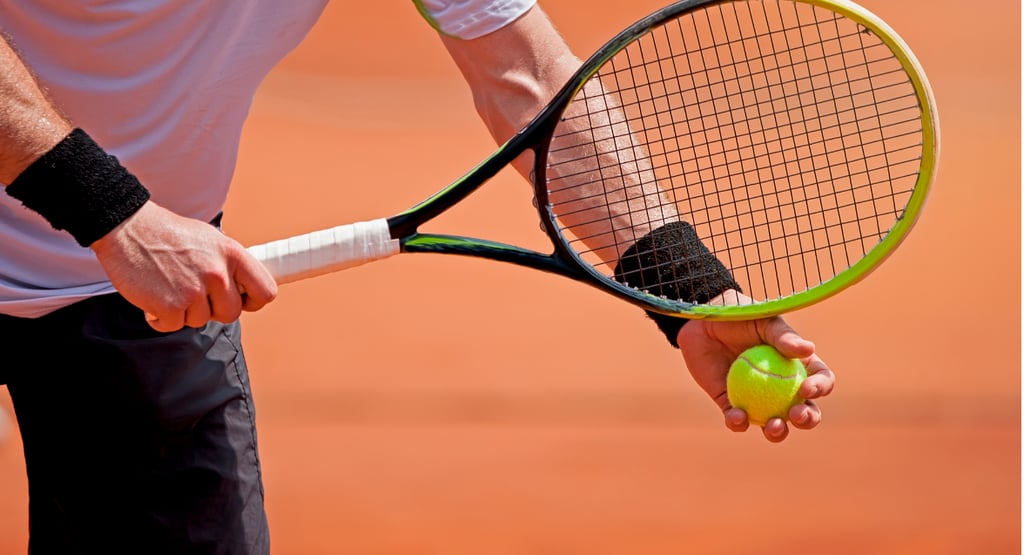Tennis: how the sport can transform your physical and mental health
Discover how tennis can improve your physical and mental well-being. Learn how this sport boosts fitness, self-esteem, and overall quality of life.
7/31/20253 min read


Have you ever thought that a racket and a ball could be powerful tools for taking care of your body and mind? Tennis, besides being an exciting sport, is a great ally of well-being. Played by millions around the world, it goes far beyond the court — it strengthens the heart, builds muscle, relieves stress, and encourages social connection.
In this guide, you’ll see how tennis can positively impact your life — and why it’s an excellent choice if you want quality of life, fun, and health in one package.
Well-being: why sports matter
Well-being is a balance between body and mind — physical, mental, emotional, and social health. Regular exercise is one of the best ways to reach that balance, and tennis stands out because it combines movement, strategy, focus, and social interaction.
Physical benefits of tennis
1) Cardiovascular conditioning
Quick sprints, direction changes, and accelerations make the heart more efficient.
Regular practice helps prevent hypertension, type 2 diabetes, and heart disease.
2) Full-body strength
Engages legs (runs/jumps), arms (swings), core (trunk rotation), and back (posture/balance).
Builds global strength, improves posture, and reduces injury risk.
3) Coordination and agility
Demands fast, precise movements.
Improves fine and gross motor skills, reflexes, and agility — useful on and off the court.
4) High calorie burn
~400–800 kcal/hour, depending on intensity.
Great for weight management with a fun, competitive edge.
Mental & emotional benefits
1) Stress and anxiety relief
Exercise releases endorphins that elevate mood and reduce tension.
2) Focus and mental agility
Strategy, timing, reading the opponent, and shot control sharpen concentration and decision-making.
3) Self-esteem and motivation
Visible progress, new skills, and small wins build confidence over time.
4) Cognitive health
Regular practice is associated with fewer symptoms of depression/anxiety and may help prevent cognitive decline later in life.
The social side: health through connection
Can be played solo or doubles, encouraging interaction and new friendships.
Local matches and amateur tournaments foster community and reduce loneliness.
Seniors: integration and autonomy (mini-tennis works great).
Kids/teens: teamwork, discipline, and respect for rules.
Tennis Is for everyone (8 to 80)
With adjusted intensity, court size, or ball type, anyone can start safely — at any age or level.
Children: coordination, discipline, socialization
Adults: combat stress and sedentary habits, improve fitness
Seniors: maintain balance, mobility, and an active social life
How to get started
1) Basic Gear
Lightweight racket suited to your level
Tennis shoes with cushioning and grip
Comfortable clothing + sunscreen
2) Where to Play
Public courts, clubs, community centers, or tennis schools
Many offer beginner lessons and equipment rental
3) Lessons & guidance
A coach (even group lessons) speeds learning and prevents bad habits.
4) Safety tips
Warm up before, stretch after
Respect your limits and listen to your body
Stay hydrated throughout
A healthy lifestyle, on and off the court
People who adopt tennis often add other healthy habits: balanced diet, quality sleep, hydration, and daily discipline. The sport also teaches emotional resilience — handling losses, staying calm under pressure, and celebrating small wins — lessons that carry into everyday life.
Your well-being can start with a single serve
Tennis is more than a sport — it’s a transformative practice that unites physical, mental, and emotional health. Whether your goal is fitness, relaxation, social connection, or fun, tennis is a long-lasting, enjoyable path to well-being.
Take action
Start today: Pick up a racket, find a nearby court, and try a 30–60 minute session this week.
Share this article: Know someone who’d love tennis? Send this along and invite them for a match!
Health
Tips for a healthy and balanced life.
© 2025. All rights reserved.
Well-being
Privacy Policy
Terms and conditions
